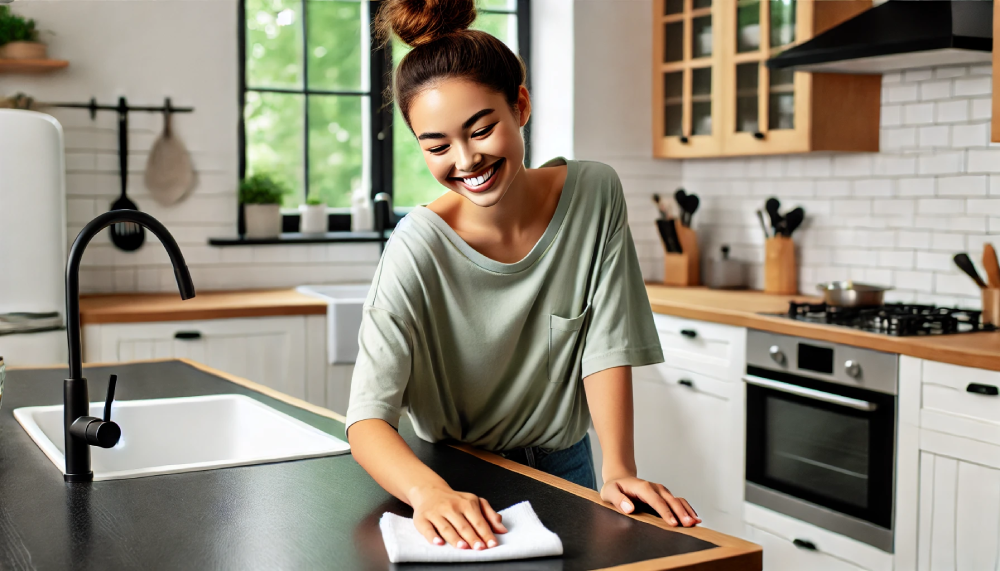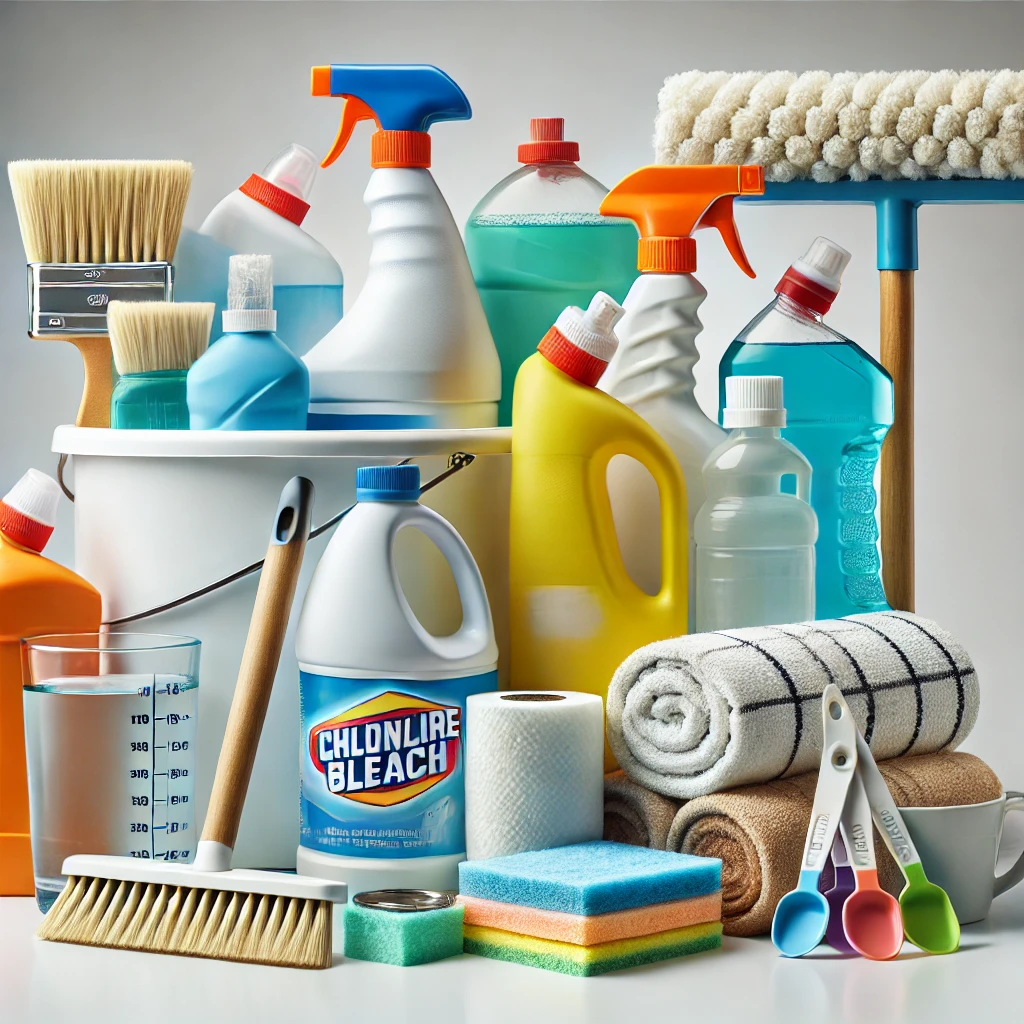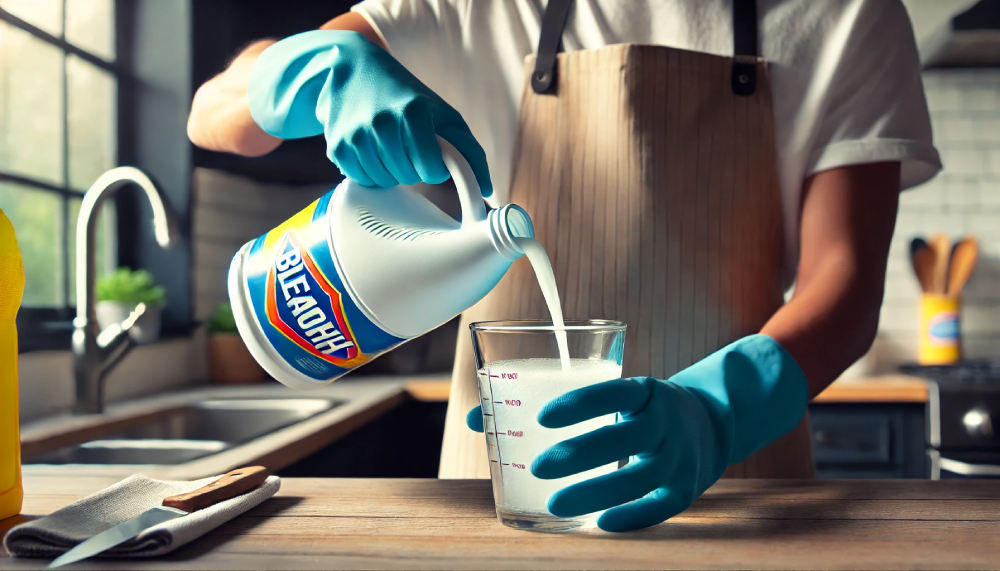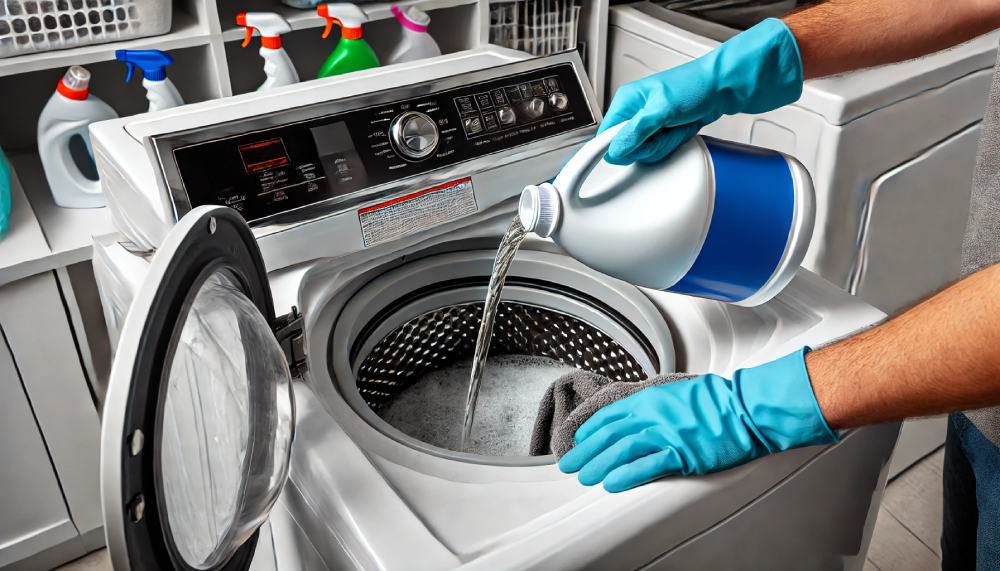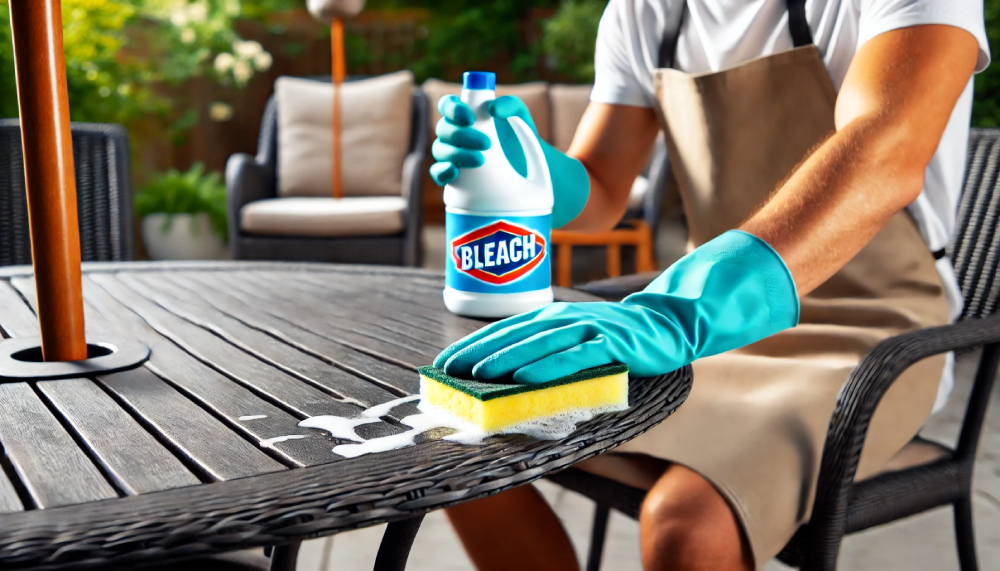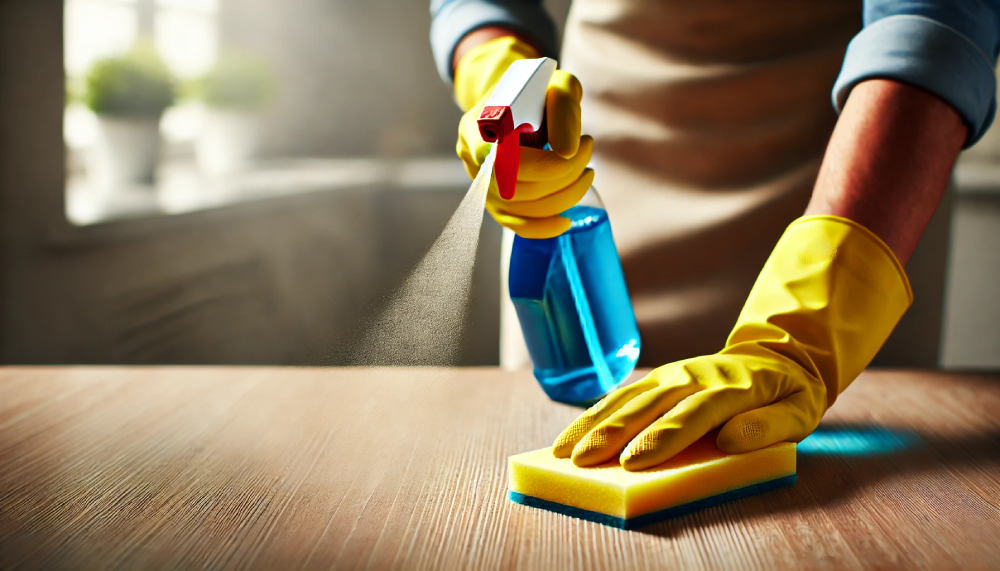Liquid bleach has been around longer than you probably realize. It was first invented all the way back in the early 1800s by a French scientist named Antoine Labarraque and later reformulated by another Frenchman, Claude-Louis Bertollet. It was Labarraque who discovered his invention’s ability to disinfect surfaces, something that he figured out long before germ theory became commonly accepted in medical communities.
As a cleaning product, bleach doesn’t usually have fancy packaging or a great marketing department, but it works. Whether you’re planning a major cleaning spree, hiring a housekeeper, or launching a cleaning business, keep reading to get advice from our Pros about how to use bleach safely to eliminate germs and bacteria in your home.
What Can Bleach Disinfect?
We should begin with where you can use bleach as a disinfectant. It’s truly one of the most versatile cleaning products around and can be useful for cleaning many surfaces that might become covered in germs. Here’s a list of where you can safely use bleach.
Kitchen |
Bathroom |
Laundry Room |
Outdoors |
Countertop |
Countertop |
Bleach-safe clothing |
Patio furniture |
Sink |
Sink |
Washing machine |
Outdoor surfaces, including brick and slate |
Floor |
Shower |
Tablecloths and napkins |
Outdoor toys |
Refrigerator |
Floor |
|
Outdoor decorations & ornaments |
Trash can |
Trash can |
|
Trash cans and recycling bins |
If you’re unsure about whether it’s safe to use bleach on a specific item, we recommend reading the label or checking the manufacturer’s website before proceeding.
What Things Can Bleach Not Disinfect?
Here are a few places that you shouldn’t use bleach.
- Clothing that isn’t marked as being bleach-safe
- Certain fabrics, including cashmere, fleece, leather, microfiber, mohair, silk, spandex, and wool
- Natural stone surfaces, marble, and granite
- Stainless steel
- Painted wood
- Electronics, including phones, tablets, and computer screens
We’re sure you already know this, but it’s also dangerous to use bleach around food.
Do You Need Any Supplies or Other Cleaning Products to Disinfect with Bleach?
Bleach is an extremely effective disinfectant, and you won’t need much to clean with it. However, here are a few things to have on hand.
- Chlorine bleach and/or color safe bleach
- Water
- Clean rags
- Paper towel
- Brushes
- Mop
- Measuring cups and spoons (to get cleaning ratios right)
It’s a short list and that means that it’s easy to get to work using bleach to disinfect your bathroom, kitchen, yard, or kids’ rooms.
Bleach Dilution Ratio for Disinfecting
Before you start using bleach as a disinfectant, you’ll need to have a firm grasp of how to dilute it to clean a variety of surfaces. Dilution is a must because if you don’t dilute bleach, it can irritate your eyes and skin and even damage items you’re trying to clean.
Surface/Purpose |
Bleach |
Water |
All-purpose cleaner |
½ cup |
1 gallon |
Trash cans |
½ cup |
¾ gallon |
Cutting boards |
2 tsp |
1 gallon |
Tiles (to remove mold) |
¾ cup |
1 gallon warm water |
Outdoor furniture |
¾ cup |
1 gallon warm water |
Moldy shower curtain |
⅔ cup (add to washing machine with detergent) |
|
If you intend to put your bleach solution in a spray bottle, the most important ratio to know is that you should use 48 parts water to one part bleach. For a 24-ounce bottle, that would work out to two cups of water plus two teaspoons of bleach.
Watch this video to see how to make your own DIY bleach disinfecting solution.
How to Clean Household Items and Surfaces with Bleach
Now, let’s walk through the steps to use bleach in specific locations in your home.
Using Bleach to Disinfect Counters
Follow these steps to disinfect your kitchen or bathroom countertops.
Step 1: Mix a solution of 48 parts water to 1 part bleach
Step 2: Preclean the counter to remove debris
Step 3: Using a clean rag, apply the diluted bleach solution to the countertop
Step 4: Allow the beach solution to sit for five minutes.
Step 5: Use another damp rag to wipe down the countertop and remove bleach.
Step 6: Allow the surface to dry before you use it.
Using Bleach to Disinfect Laundry
Disinfecting clothing may be necessary when someone in your house is sick – or just if you have kids or pets who make a mess. Here are the steps to follow.
Step 1: Check all clothing labels to make sure they can be washed with bleach.
Step 2: To be safe, test a hidden area of clothing with diluted bleach. If it isn’t affected, you can use bleach on it.
Step 3: For a standard washing machine or a small load, add ½ cup of bleach. For larger loads or heavily soiled clothing, add ⅔ cup of bleach.
Step 4: Add detergent and run your washing machine.
Using Bleach to Disinfect Patio Furniture
A lot of outdoor surfaces may attract mold and mildew. Here are the steps to disinfect them using bleach.
Step 1: Make a solution of ½ cup bleach to 1 gallon of water.
Step 2: Pre-clean the furniture to remove heavy dirt.
Step 3: Use a mop or cleaning brush to apply diluted bleach and scrub as needed.
Step 4: Reapply bleach solution as needed to keep the surface wet.
Step 5: Rinse surface with a hose and allow to dry.
Tips for Using Bleach Safely
Any time you open a bottle of bleach to clean your home, you’ll need to be mindful of the potential hazards. Here are some pointers from the Centers for Disease Control.
- Never mix bleach with anything other than water. This includes cleaning products such as ammonia, vinegar, and hydrogen peroxide. (It is safe to use bleach with laundry detergent.)
- Open windows to make sure the room you’re in is well ventilated.
- Check the label to see if the manufacturer recommends using protective gear such as goggles or gloves.
- Don’t use bleach around food or pets.
- When using bleach outdoors, be careful to avoid runoff getting into your garden or near your plants.
Something else to be aware of is that not all bleach is created equal. Scented bleaches sometimes include less sodium hypochlorite, the active ingredient in bleach. The usual percentage range for chlorine bleach is between 5% and 9% and products that don’t specify the percentage or contain less won’t be effective as a disinfectant.
Frequently Asked Questions About Disinfecting with Bleach
Can I use straight bleach to disinfect?
No, you should always dilute bleach before using it because it may be dangerous to inhale and cause lung or skin irritation. Even with diluted bleach, you may want to wear a mask or gloves.
Do you need to rinse after cleaning with bleach?
Yes, you should rinse any surface that you clean with diluted bleach. This is a particularly important step when you’re using bleach on a surface where you prepare food or if you have kids or pets.
How much bleach do I use to disinfect?
The standard ratio for diluting bleach is 48 parts water to one part bleach. That works out to ½ cup per gallon or 1 teaspoon per cup of water.
Can I store leftover diluted bleach to use later?
Leftover bleach solutions lose their effectiveness after about 24 hours. If you’re cleaning the next day, you can use the same solution, but storing a bleach solution for longer than a day isn’t something we recommend.
Conclusion
If you want to banish harmful bacteria and germs from your house, including your kitchen, bathroom, and outdoor areas, diluted bleach is the answer. This guidance from our Pros will help you use bleach safely and keep your home (and family) safe from infection.
